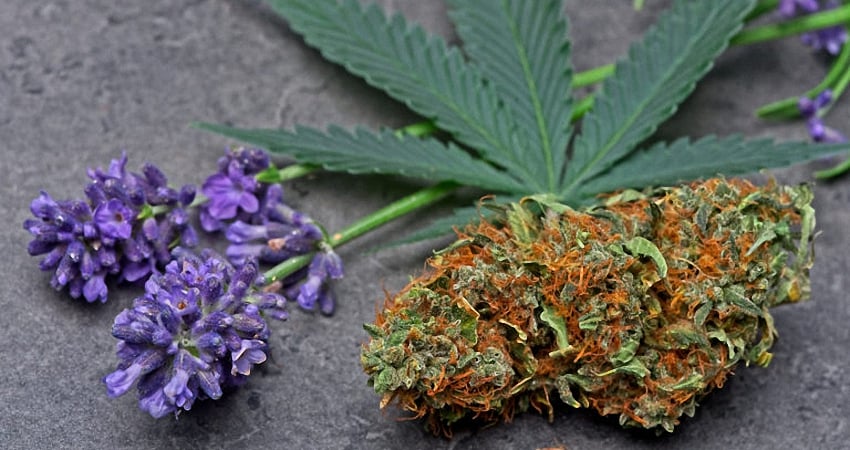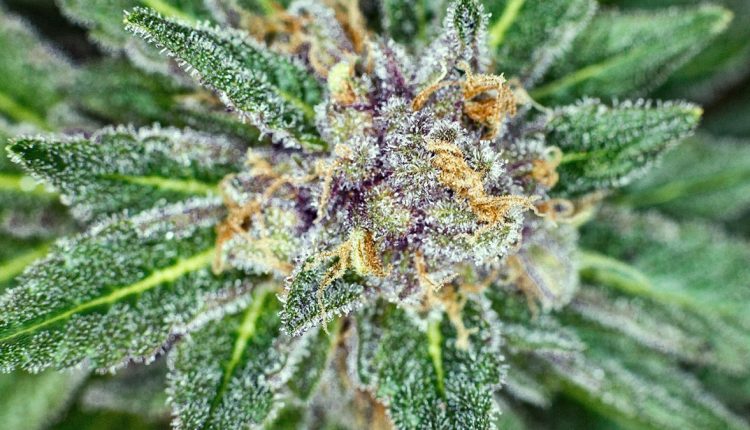As terpenes become a more popular topic in the cannabis community, you’re more likely to encounter all the varieties by name, like linalool. But what is a terpene, and what purpose does it serve?
Scientists in recent years have discovered that terpenes are a big part of how each strain develops its unique smell and flavor. However, research has also shown that terpenes are responsible for more than that – many also have significant medical benefits.
There are hundreds of known terpenes, but only a few occur in high enough amounts to offer medical benefits. These are called the primary terpenes. One is called linalool, and it’s often present alongside myrcene (a different terpene with similar properties).
So what is linalool, and why is it important? Here, we’ll tell you everything you need to know about this exciting terpene and the benefits it brings.
What Is Linalool?
You’ve probably heard that lavender has amazing aromatherapeutic benefits. That is mainly due to the presence of linalool in lavender.
This particular terpene has a delicate, floral scent, like the scent associated with lavender. As a result, it’s an essential ingredient in nearly all lavender-based essential oils, makeup, washes, and more.
Linalool is present in more than 200 types of flowers aside from lavender, such as:
- Cinnamon
- Coriander
- Rosewood
- Mint
The terpene is also present in fungi. We consume more linalool in a year than you might think.
Linalool from cannabis offers relaxing, mood-boosting properties and stress relief purposes.
What Does Linalool Treat?
Linalool acts like a naturally occurring sedative, and it’s highly prevalent in both alternative and traditional medicines. Generally, this terpene offers the following benefits:
- It may help with the treatment of epilepsy. A chemical in the brain called glutamate is responsible for aggravated epileptic episodes. Linalool works to block glutamate receptors in the brain, which can significantly lower the chance of seizures.
- It can reduce symptoms of anxiety and depression. Most people know lavender is a widely used alternative method for treating anxiety and depression. According to studies such as Guzmán-Gutiérrez et al.’s 2012 study Antidepressant activity of Litsea glaucescens essential oil, linalool has shown to reduce anxiety and depression-like behaviors in mice.
- It can lessen pain. Linalool tackles pain on different fronts. It can target acetylcholine, which is responsible for muscle movement. It can increase the production of adenosine in the brain, which is related to your heart rate. It can also soothe spinal cord cells, which are responsible for transmitting pain signals to your brain.
- It could play a role in treating Alzheimer’s disease. Research on this is still underway. However, some studies have pointed towards linalool as a possible treatment for this degenerative disease.
- It helps with stress-relief. Linalool can help you slow your heart rate, regulate stress on the immune system, and help conserve energy by using the natural parasympathetic response that the body has.
- It may support recovery from opioid addiction. There is evidence to suggest that linalool can be a soothing tool on the long road to recovering from opioid addiction.
Strains with Linalool and What to Know

Are you looking to find strains with a substantive amount of this terpene? The easiest method is to sniff each for a lavender-like scent. If you don’t want to do that, then look for one of these popular types:
- Lavender: The name gives it away, and it’s known for its pain relief and stress relief abilities.
- GDP (Granddaddy Purple): This indica hybrid of Purple Urkle and Big Bud has a dense structure and smells like grapes and berries. People often use this to treat insomnia, stress, or lack of appetite.
- LA Confidential: This strain has some psychedelic effects. It’s perfect for treating acute pain, stress, and insomnia.
- Amnesia Haze: This strain is a great mood-booster. It gives a big energy boost and helps combat depression, fatigue, and stress.
Conclusion
Like all terpenes, linalool works with other active parts of cannabis to achieve its full effect. Make sure you know what you’re getting – that’s why lab-tested works best.
